Deepwater Horizon and the Technology, Economics, and Environmental Impacts of Resource Depletion
Richard Heinberg
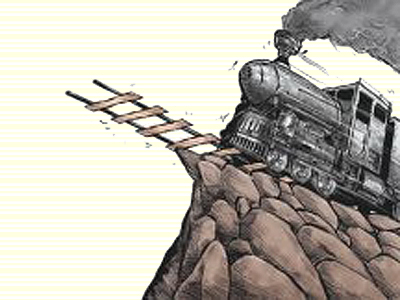 Following the failure of the latest efforts to plug the gushing leak from BP's Deepwater Horizon oil well in the Gulf of Mexico, and amid warnings that oil could continue to flow for another two months or more, perhaps it's a good time to step back a moment mentally and look at the bigger picture - the context of our human history of resource extraction - to see how current events reveal deeper trends that will have even greater and longer-lasting significance.
Much of what follows may seem obvious to some readers, pedantic to others. But very few people seem to have much of a grasp of the basic technological, economic, and environmental issues that arise as resource extraction proceeds, and as a society adapts to depletion of its resource base. So, at the risk of boring the daylights out of those already familiar with the history of extractive industries, here follows a spotlighting of relevant issues, with the events in the Gulf of Mexico ever-present in the wings and poised to take center stage as the subject of some later comments. Readers in the "already familiar" category can skip straight to part 5.
1. The Pyramid Scheme
Perhaps it's best to start with the most familiar metaphor: resource extraction always proceeds on the basis of the low-hanging fruit principle. We typically go after the most easily accessible, highest quality portions of the resource first, and save the hard-to-get, low-quality portions for later.
Geologists use a different metaphor; they commonly speak of a "resource pyramid." The capstone represents the easily and cheaply extracted portion of the resource; the next layers are portions of the resource base that can be extracted with more difficulty and expense, and often with worse environmental impacts; while the remaining bulk of the pyramid represents resources that geologists believe are unlikely to be extracted under any realistic pricing scenario, usually because of depth, location, or quality issues. There's a pyramid for oil, one for coal, one for iron ore, and so on.
As we chew our way down the layers of each pyramid, starting at the top, some fairly predictable things happen with regard to technology, economics, and environmental impacts. These effects are often mutually interacting, and I will try to highlight those mutual interactions as we go.
2. Technology
Some resources can be extracted, at least in initial stages, with very simple tools. Primitive mining was accomplished with stone and wooden picks and shovels, using reed baskets to carry ore (usually copper, gold, or silver) to nearby sites where it could be smelted in charcoal fires. Once copper, tin, and iron had been smelted in sufficient quantities, metal tools began to be used in mining.
Early coal mining consisted simply of digging lumps from surface outcrops, but by the 18th century British miners were working in shafts over 300 feet deep.
Many very early oil wells consisted of shallow pits (up to 100 ft deep) dug into natural seeps; the earliest known drilling for oil occurred in China in the fourth century, achieving depths of up to about 800 feet using bits attached to bamboo poles. As petroleum became a heavily traded commodity in the early 20th century, rotary drills using steel pipes and bits were developed, able to penetrate to depths of thousands of feet.
The patterns are clear and unsurprising: As resources near the Earth's surface become depleted, we have to work harder and dig deeper to extract more of what we want and have come to need. Production problems lead to the development of new extractive technologies - which, in solving those problems, often also make more of the resource accessible. As a larger portion of the resource base becomes available to society, more uses for the resource are discovered. The new technologies themselves (starting with metal tools) also frequently wind up having other purposes - ones that may increase demand for the resource they were developed to extract.
There is no more significant or instructive example of these trends than the story of the steam engine - which was invented to pump water out of deepening coal mines, but (when applied to other ends, such as providing the motive power for railroads) became a prime user of coal. Tellingly, iron rails were also first used in coalmines. And thus, of course, began the Industrial Revolution.
Fast-forward to deepwater drilling rigs, satellite and seismic geological surveys, horizontal drilling, fracking, and Blowout Preventers (BOPs) for finding and extracting oil (and unconventional natural gas); Steam-Assisted Gravity Drainage (SAGD) technology for obtaining oil from tar sands; long-wall mining, Underground Coal Gasification (UCG), and Carbon Capture and Sequestration (CCS) in the coal industry; and so much more. Each extractive industry boasts its own fleet of cutting-edge technologies, each consisting of a suite of tool systems all working together to make the production of some fuel or ore cheaper or more environmentally benign.
The 21st-century search for useful non-renewable resources is testing the limits of science; and both the brawn and the intricacy of machines that have been developed to feed our growing human needs for nonrenewable resources are truly impressive. Watching some of these machines in action, it is tempting to think that human ingenuity has no bounds. Moreover, since we are still fairly close to the top of the pyramid with regard to many nonrenewable resources, it is also natural to assume that constantly improving machines will enable us to dig very far down indeed, so as to continue supplying our burgeoning collective appetite for energy and minerals for many generations to come.
However, as we are about to see, the development of extractive technologies also involves tradeoffs and limits.
3. Economics
Fancy extraction technology comes at a price. But investment in more expensive tools is often justified by greater efficiency of production, reduced environmental impacts, or by the ability to open more of the resource base to exploitation. The relationship between cost and payoff is captured to some extent by the simple ratio of Return on Investment (ROI), to which every drilling or mining company's bean counters pay vigilant attention. This ratio can easily go sour in situations where the resource isn't present in sufficient quantities (even using the newest oil exploration techniques, two out of three initial wells - each costing tens to hundreds of millions of dollars - still comes up dry) or where environmental problems get out of hand (note to self: at end of fiscal year, remember to review BP's balance sheet for Gulf of Mexico operations).
But financial ROI is not the only return on investment that matters. If we're discussing energy resources (oil, gas, or coal) then we also have to keep track of the ratio between the energy invested in exploration and production versus the energy yielded by the resources extracted. This is commonly termed Energy Return on Energy Invested, or EROEI. Technology uses energy, and bigger and more complicated machines usually use more of it. Moreover, the mining and refining of deeper or lower-grade fossil fuels generally takes more energy regardless of what technology is used. When the amount of energy required to produce a given quantity of fuel equals the amount of energy obtained from burning it, that fuel ceases to be a net energy source. There may be financial reasons to continue the production process (including government subsidies or tax write-offs), but from an energetic standpoint the exercise has become pointless. The EROEI for fossil fuels is declining for all the above reasons.
Since each layer further down the resource pyramid requires more expensive extractive machinery, while yielding lower-quality or more expensively produced fuels or ores, one would expect that the market price for resources would continually be rising. But this has not been the case in most instances - until recently. During the 20th century, most commodity prices (including prices for metal ores and, often, fossil fuels) actually declined in inflation-adjusted terms. Why? More areas for exploration were continually being opened, while payoffs from the ability of new technology to access lower layers of the resource pyramid trumped both the extra cost of the technology itself and the declining resource quality (a factor that must be overcome with increasing investment in refining or ore upgrading).
Over the past few years, that situation has begun to change. A study, "Increasing Global Nonrenewable Natural Resource Scarcity," by Chris Clugston tracks the production levels and price of 57 Non-renewable Natural Resources (NNRs). Clugston begins by pointing out that:
Following the failure of the latest efforts to plug the gushing leak from BP's Deepwater Horizon oil well in the Gulf of Mexico, and amid warnings that oil could continue to flow for another two months or more, perhaps it's a good time to step back a moment mentally and look at the bigger picture - the context of our human history of resource extraction - to see how current events reveal deeper trends that will have even greater and longer-lasting significance.
Much of what follows may seem obvious to some readers, pedantic to others. But very few people seem to have much of a grasp of the basic technological, economic, and environmental issues that arise as resource extraction proceeds, and as a society adapts to depletion of its resource base. So, at the risk of boring the daylights out of those already familiar with the history of extractive industries, here follows a spotlighting of relevant issues, with the events in the Gulf of Mexico ever-present in the wings and poised to take center stage as the subject of some later comments. Readers in the "already familiar" category can skip straight to part 5.
1. The Pyramid Scheme
Perhaps it's best to start with the most familiar metaphor: resource extraction always proceeds on the basis of the low-hanging fruit principle. We typically go after the most easily accessible, highest quality portions of the resource first, and save the hard-to-get, low-quality portions for later.
Geologists use a different metaphor; they commonly speak of a "resource pyramid." The capstone represents the easily and cheaply extracted portion of the resource; the next layers are portions of the resource base that can be extracted with more difficulty and expense, and often with worse environmental impacts; while the remaining bulk of the pyramid represents resources that geologists believe are unlikely to be extracted under any realistic pricing scenario, usually because of depth, location, or quality issues. There's a pyramid for oil, one for coal, one for iron ore, and so on.
As we chew our way down the layers of each pyramid, starting at the top, some fairly predictable things happen with regard to technology, economics, and environmental impacts. These effects are often mutually interacting, and I will try to highlight those mutual interactions as we go.
2. Technology
Some resources can be extracted, at least in initial stages, with very simple tools. Primitive mining was accomplished with stone and wooden picks and shovels, using reed baskets to carry ore (usually copper, gold, or silver) to nearby sites where it could be smelted in charcoal fires. Once copper, tin, and iron had been smelted in sufficient quantities, metal tools began to be used in mining.
Early coal mining consisted simply of digging lumps from surface outcrops, but by the 18th century British miners were working in shafts over 300 feet deep.
Many very early oil wells consisted of shallow pits (up to 100 ft deep) dug into natural seeps; the earliest known drilling for oil occurred in China in the fourth century, achieving depths of up to about 800 feet using bits attached to bamboo poles. As petroleum became a heavily traded commodity in the early 20th century, rotary drills using steel pipes and bits were developed, able to penetrate to depths of thousands of feet.
The patterns are clear and unsurprising: As resources near the Earth's surface become depleted, we have to work harder and dig deeper to extract more of what we want and have come to need. Production problems lead to the development of new extractive technologies - which, in solving those problems, often also make more of the resource accessible. As a larger portion of the resource base becomes available to society, more uses for the resource are discovered. The new technologies themselves (starting with metal tools) also frequently wind up having other purposes - ones that may increase demand for the resource they were developed to extract.
There is no more significant or instructive example of these trends than the story of the steam engine - which was invented to pump water out of deepening coal mines, but (when applied to other ends, such as providing the motive power for railroads) became a prime user of coal. Tellingly, iron rails were also first used in coalmines. And thus, of course, began the Industrial Revolution.
Fast-forward to deepwater drilling rigs, satellite and seismic geological surveys, horizontal drilling, fracking, and Blowout Preventers (BOPs) for finding and extracting oil (and unconventional natural gas); Steam-Assisted Gravity Drainage (SAGD) technology for obtaining oil from tar sands; long-wall mining, Underground Coal Gasification (UCG), and Carbon Capture and Sequestration (CCS) in the coal industry; and so much more. Each extractive industry boasts its own fleet of cutting-edge technologies, each consisting of a suite of tool systems all working together to make the production of some fuel or ore cheaper or more environmentally benign.
The 21st-century search for useful non-renewable resources is testing the limits of science; and both the brawn and the intricacy of machines that have been developed to feed our growing human needs for nonrenewable resources are truly impressive. Watching some of these machines in action, it is tempting to think that human ingenuity has no bounds. Moreover, since we are still fairly close to the top of the pyramid with regard to many nonrenewable resources, it is also natural to assume that constantly improving machines will enable us to dig very far down indeed, so as to continue supplying our burgeoning collective appetite for energy and minerals for many generations to come.
However, as we are about to see, the development of extractive technologies also involves tradeoffs and limits.
3. Economics
Fancy extraction technology comes at a price. But investment in more expensive tools is often justified by greater efficiency of production, reduced environmental impacts, or by the ability to open more of the resource base to exploitation. The relationship between cost and payoff is captured to some extent by the simple ratio of Return on Investment (ROI), to which every drilling or mining company's bean counters pay vigilant attention. This ratio can easily go sour in situations where the resource isn't present in sufficient quantities (even using the newest oil exploration techniques, two out of three initial wells - each costing tens to hundreds of millions of dollars - still comes up dry) or where environmental problems get out of hand (note to self: at end of fiscal year, remember to review BP's balance sheet for Gulf of Mexico operations).
But financial ROI is not the only return on investment that matters. If we're discussing energy resources (oil, gas, or coal) then we also have to keep track of the ratio between the energy invested in exploration and production versus the energy yielded by the resources extracted. This is commonly termed Energy Return on Energy Invested, or EROEI. Technology uses energy, and bigger and more complicated machines usually use more of it. Moreover, the mining and refining of deeper or lower-grade fossil fuels generally takes more energy regardless of what technology is used. When the amount of energy required to produce a given quantity of fuel equals the amount of energy obtained from burning it, that fuel ceases to be a net energy source. There may be financial reasons to continue the production process (including government subsidies or tax write-offs), but from an energetic standpoint the exercise has become pointless. The EROEI for fossil fuels is declining for all the above reasons.
Since each layer further down the resource pyramid requires more expensive extractive machinery, while yielding lower-quality or more expensively produced fuels or ores, one would expect that the market price for resources would continually be rising. But this has not been the case in most instances - until recently. During the 20th century, most commodity prices (including prices for metal ores and, often, fossil fuels) actually declined in inflation-adjusted terms. Why? More areas for exploration were continually being opened, while payoffs from the ability of new technology to access lower layers of the resource pyramid trumped both the extra cost of the technology itself and the declining resource quality (a factor that must be overcome with increasing investment in refining or ore upgrading).
Over the past few years, that situation has begun to change. A study, "Increasing Global Nonrenewable Natural Resource Scarcity," by Chris Clugston tracks the production levels and price of 57 Non-renewable Natural Resources (NNRs). Clugston begins by pointing out that:
During the 20th century, global production levels associated with 56 of the 57 analyzed NNRs (98%) increased annually, while global price levels associated with 45 of the 57 analyzed NNRs (79%) decreased annually. Generally increasing global NNR production levels in conjunction with generally decreasing global NNR price levels indicate relative global NNR abundance during the 20th century. On the whole, global NNR supplies kept pace with ever-increasing global demand during the 20th century.
So far, so good. But that's changing.
Generally slowing or declining global NNR production growth in conjunction with generally increasing global NNR prices indicate increasing NNR scarcity during the early years of the 21st century... Annual global production levels increased during the 20th century, then decreased during the 21st century; while annual price levels decreased during the 20th century, then increased during the 21st century...
Case in point: for petroleum, between the years 2000 and 2010 production increased 9 percent, while prices rose by almost 400 percent. No, we're not "running out" of oil, but we are running out of cheap oil. Clugston echoes this conclusion more generally: "We are not about to 'run out' of any NNR; we are about to run 'critically short' of many."
Something else we learn from petroleum: as production expands and high-quality deposits deplete, continually higher prices do not represent the full extent of the problems that arise. At some point, regardless of price, production reaches a maximum rate and begins to decline (this, of course, is what the whole "Peak Oil" discussion is all about). This "peaking" phenomenon has occurred with regard to the extraction of many different resources, and in many places and times, so its dynamics are now the subject of fairly sophisticated study.
Standard economic theory holds that, as a resource becomes scarce, potential buyers will bid prices upward; and as prices escalate, increasing numbers of users will turn to substitutes. It's easy to point to historic examples where these things happened, but there have also been instances where prices responded in a highly non-linear fashion (more on that below), and where substitutes were unavailable or inadequate. In the case of fossil fuels, substitutes do exist; however, most have drawbacks of one kind or another (see Searching for a Miracle) and the scale of current global fossil fuel usage makes a full transition to substitutes a truly daunting prospect.
It is important to know whether commodity prices escalate linearly as petroleum and other non-renewable resources become scarcer. If they do, then the invisible hand of the market will solve many of the problems that scarcity brings: in addition to making substitutes more attractive, higher prices will motivate efforts to increase efficient usage of the resource. But a recent historic example calls such rosy scenarios for painless, market-led resource transitions into question. In the years and months leading up to July 2008, demand for oil was increasing, but global production remained stagnant. Traders bid the price up to a record $147 per barrel - and global financial mayhem followed. While a concurrent derivatives/real estate crash was responsible for much of the bloodshed, dramatic slumps in the auto, airline, trucking, and shipping industries seemed closely tied to the oil price spike. These (along with the general economic convulsion) resulted in declining fuel demand, which in turn caused petroleum prices to plummet nearly to $30 per barrel in December 2008. This then led to curtailed investment in oil exploration - which, in due course, will provoke another rapid price rise as supplies dwindle. The cycle will presumably begin again; and each time it recurs, it will likely have an even more devastating economic impact. Not all non-renewable resources will provoke similar scenarios as they deplete, as very few are so essential to the economy that scarcity or price spikes could trigger a major recession. However, price volatility does seem to be a typical sign of depletion-led resource scarcity.
Finally, perhaps the most significant economic factor with regard to the extraction of nonrenewable resources is growth. Modern economies depend on growth in provision of goods and services; meanwhile, world population continues to expand. As we make our way down the down the pyramid, increasing appetites (growing population times growing per capita consumption rates) translate to increasing dependence on depleting resources. If total consumption rates were declining or even constant, the economic and environmental problems stemming from resource depletion would be easier to solve. Growth makes all such problems more intractable with every passing year.
4. Environmental Impacts
In many respects, advancing technology tends to reduce the environmental impact of each increment of resource extraction (though there are exceptions!).
Underground coal mining in the early days - only a few decades ago - was far more dangerous, dirty, and dreary than it is today, though mine disasters still occur (as we sadly discovered just a few weeks ago in West Virginia) and miners still die from pneumoconiosis.
Similarly, the oil business in the early 20th century lacked regulations and safety technology, and resulted in more frequent oil spills and fatal accidents than does today's high-tech industry. The first successful exploratory oil wells nearly always produced gushers because there was little to prevent pressurized oil from shooting out the top of the drill pipe once reservoir contact was made. These days, gushers are extremely rare due to modern oil well pressure control systems.
In the deepwater Gulf of Mexico, we see on display all the most advanced technology for drilling safety and spill cleanup. Blowout preventers, pressure monitors, careful planning, regulations, and advanced engineering combine to make accidents rare. If something does go wrong, there are remote-controlled underwater vehicles, top kills, and junk shots to seal off the leaks, and oil booms and chemical dispersants to deal with the spill itself.
And yet, despite all this technology and expertise, we are still witness to one of the worst environmental disasters in history. Why?
As we are still learning, the Deepwater Horizon disaster was due largely to gross negligence on part of several companies, primarily BP, and also to the approval of a flawed drilling plan by the Federal Government's Minerals Management Service (MMS). Such lapses are to be anticipated. In a deepwater drilling operation with a budget running upwards of a hundred million dollars, every minute costs money, so there are strong incentives to cut costs. Often, engineers (who may be more concerned about safety) are overruled by management (who are more concerned about budgets and ROI). Then there is the phenomenon - common throughout government - of regulators being figuratively (or literally) in bed with industries they are supposed to be regulating. So in March 2009, when BP filed a plan with the MMS, repeatedly asserting that it was "unlikely that an accidental surface or subsurface oil spill would occur from the proposed activities," so unlikely in fact that "a blowout scenario... is not required for the operations proposed," the regulators simply took the company at its word.
In the bigger scheme of things, an event such as the Deepwater Horizon explosion becomes more likely with every passing year, despite the continuing development of superior technology: as oil production levels grow to meet rising demand, and as the industry is forced to drill deeper in ever more hostile environments, there are more things to go wrong; and when problems happen, they are harder to fix.
While the world's attention is appropriately riveted on the consequences of the Macondo blowout, it is important to remember the ongoing, routine environmental devastation that comprises the background static of contemporary industrial life: climate chaos, air and water pollution, and loss of biodiversity. In many instances of resource extraction - including "mountaintop removal" coal mining and tar sands oil production - massive environmental destruction is the result not of unforeseen accidents, but of normal operations.
With the convergence of climate change and "clean coal" technology we see the culmination of many of the trends discussed here. Climate change is an environmental consequence of nonrenewable resource usage, and one that is so horrendous it will stop civilization in its tracks. Therefore something must be done to stop it. Several key industrial nations can't afford to give up coal, the highest-carbon fuel, because their economies depend on it and the alternatives would be too costly to develop. The ideal solution would be a new technology to clean up carbon emissions from burning coal. Voila! Such a technology exists - Carbon Capture and Sequestration (CCS), which entails burying carbon dioxide from the coal combustion process underground. But CCS will cost so much to build to scale that the technology will almost certainly never actually be implemented. (see China's Coal Bubble...and how it will deflate U.S. efforts to develop "clean coal") The upshot: there is no apparent solution to the coal/climate conundrum that preserves economic growth much longer. The trends end in some sort of unpredictable discontinuity.
5. Deepwater Horizon: Impact on Future Oil Production
Now, back to the events in the Gulf of Mexico.
The U.S. Department of Energy forecasts that "a vast majority" of projected increases in U.S. oil production in the near term will come from Gulf deepwater fields similar to the site of the Deepwater Horizon spill. Such deepwater fields currently represent about 70 percent of all Gulf oil production (the other 30 percent come from shallow depths, typically of a few hundred feet). Offshore oil provides almost a third of total U.S. oil production of 5.5 million barrels per day, and that percentage is rising. For the world as a whole, the International Energy Agency projects that by 2020 deepwater will be providing 40 percent of all oil being extracted. Why the emphasis on deepwater? Because we've already chewed our way down through the higher levels of the oil pyramid: there's very little onshore or shallow-water oil left to find. So down we go!
The BP spill is likely to throw a wrench into these plans. Heavier regulations, and higher (more expensive) standards are on the way. President Obama has just ordered the suspension of all current U.S. deepwater drilling operations for six months, and future deepwater projects could be delayed by years.
Insurance costs for deepwater projects will soar ("The cost of insuring a rig against a so-called physical loss - damage to the rig itself - can easily surpass $3 million a year, and could reach $9 million depending on the deductible," according to Rigzone). Total insurance claims on the Deepwater Horizon disaster could far exceed the total premiums paid by all oil drillers to insurance companies in 2010, so a bankrupting of some insurers is at least possible.
Further, deepwater projects require financing - however, in case anyone hasn't noticed, the economy is falling apart. Banks aren't lending because of all the bad loans on their books; and, though oil companies may be flush with cash, they prefer to spread risks around. Now that the risks associated with deepwater exploration appear much larger, and credit is tight in any case, fewer investors are likely to want to jump aboard. Oil companies may want to just hang onto their cash by buying up their own stock shares. After all, the object of the game is to make a profit; producing more oil is just a means to that end, and if a better means is available, why not go with it? Sure, "financializing" the oil industry doesn't work over the long term, as oil companies need booked reserves in order to attract investors, and maintaining reserves requires exploration. But who's in it for the long term? Hey, in the long term, we're dead. Maybe it's time to cash out and let a new generation of managers figure out what to do next.
Then there is the problem of over-optimism. Developers of production projects are naturally inclined to talk up the prospects for the latest "play." Later, when reality sets in, initial rosy forecasts may not be borne out. Case in point: BP's flagship deepwater Gulf of Mexico project, Thunderhorse, was slated to produce a billion barrels of oil at the rate of 250,000 barrels a day (b/d). Production hit 172,000 b/d in January 2009, but then declined rapidly to 61,000 b/d by the end of last year. BP has not commented publicly on the reason for this unexpected production crash, but outside observers are skeptical that the platform will ever actually produce the promised billion barrels. According to Post Carbon Institute Fellow Tom Whipple in "Peak Oil Review" for May 24, "At least 25 other deepwater projects are said to be facing problems of falling production, raising the question of just how much oil these very expensive deepwater projects will ever produce." Take one Thunderhorse, add a Deepwater Horizon, mix thoroughly, and what do you get? Investor jitters.
Economic optimists never tire of pointing out how enormous the resource pyramid is when viewed as a whole. When society is desperate, they say, we will go after energy resources and raw materials no matter where they are, no matter how expensive the process, and no matter how much environmental destruction comes with it. We'll solve problems that arise as best we can and move on. Growth is inevitable and unstoppable, and if fuels and materials that enable growth exist, we will find and use them. In reality, though, things may not work out that way. New extraction projects require the cooperation of many functioning systems including manufacturing/fabrication, finance, insurance, regulation, and advanced technical education. As that system of systems becomes more complicated, the sites of potential breakdown multiply. The current economic crisis is likely to rupture the system in multiple places, crippling extractive industries. Much of the remaining oil, coal, gas, and mineral resource base that could technically be extracted may well end up staying in the ground simply because society can't continue to organize itself functionally at a high enough level to maintain the growing effort needed.
In short, the Deepwater Horizon story is not just an environmental tragedy. It is a story about the limits of both extractive technologies and the increasingly complex societal systems that support them. It's a reminder that the whole project of basing unending economic growth on ever-increasing rates of extraction of depleting nonrenewable resources is wrongheaded from start to finish. And it's a signal that hopes for our economy to magically "dematerialize" have turned out to be just that - mere hopes.
6. This Is What the End of the Oil Age Looks Like
There will be plenty of blame to go around, as events leading up to the fatal Deepwater Horizon rig explosion are sorted out. Even if further efforts to plug the gushing leak succeed, the damage to the Gulf environment and to the economy of the region are incalculable and will linger for a very long time indeed. The deadly stench from oil-soaked marshes - as spring turns to hot, fetid summer - will by itself ruin tens or hundreds of thousands of lives and livelihoods. Then there's the loss of the seafood industry: we're talking about more than the crippling of the economic backbone of the region; anyone who's spent time in New Orleans (my wife's family all live there) knows that the people and culture of southern Louisiana are literally as well as figuratively composed of digested oysters, shrimp, and speckled trout. Given the historic political support from this part of the country for offshore drilling, and for the petroleum industry in general, this really amounts to sacrificing the faithful on the altar of oil.
President Obama has called the spill a "massive and potentially unprecedented environmental disaster," and his representatives are now referring to it as both the worst oil spill and the worst environmental disaster in U.S. history.
But it's much more than that. It is a sign that we're nearing the end of a trail we've been following for at least a couple of centuries now.
Once again, I must repeat: we're not even close to running out of oil, coal, gas, or most minerals. But we face a convergence of entirely predictable but severe consequences from the depletion of the concentrated, high-grade resources at the top of the pyramid: less affordable and more volatile commodity prices; worse environmental impacts - cumulative, mutually reinforcing impacts - both from accidents and from "normal" extraction operations; declining resource quality; declining EROEI for fossil fuels; and the need for massive new investment both to grow production levels, and to keep environmental consequences at bay. And all of this is happening just as investment capital (needed to fix all these problems) is becoming scarce. In short, the monetary and non-monetary costs of growth have been rising faster than growth itself, and it looks as though we have now gotten to the inevitable point where growth may in fact no longer be an option.
The Deepwater Horizon disaster reminds us that, of all non-renewable resources, oil best deserves to be thought of as the Achilles heel of modern society. Without cheap oil, our industrial food system - from tractor to supermarket - shifts from feast to famine mode; our entire transportation system sputters to a halt. We even depend on oil to fuel the trains, ships, and trucks that haul the coal that supplies half our electricity. We make our computers from oil-derived plastics. Without oil, our whole societal ball of yarn begins to unravel.
But the era of cheap, easy petroleum is over; we are paying steadily more and more for what we put in our gas tanks - more not just in dollars, but in lives and health, in a failed foreign policy that spawns foreign wars and military occupations, and in the lost integrity of the biological systems that sustain life on this planet.
The only solution is to do proactively, and sooner, what we will end up doing anyway as a result of resource depletion and economic, environmental, and military ruin: end our dependence on the stuff. Everybody knows we must do this. Even a recent American president (an oil man, it should be noted) admitted that, "America is addicted to oil." Will we let this addiction destroy us, or will we overcome it? Good intentions are not enough. We must make this the central practical, fiscal priority of the nation.
In my 2006 book, The Oil Depletion Protocol: A Plan to Avert Oil Wars, Terrorism and Economic Collapse, I laid out a simple formula that could guide us in systematically reducing our global dependence on oil. The same general plan could be adapted for use with all other nonrenewable resources. At the time, I naively thought that environmentalists would eagerly take up the idea, and that a few courageous politicians would champion it. So far, there has in fact been very little interest in the Protocol. It turns out that nearly everyone likes the idea of using less oil, but nobody wants to take the step of actually mandating a reduction in its production and consumption, because that would require us to dethrone our Holy of Holies - economic growth. It's so much more comfortable to spout support for the intention to build more electric cars - a technology that in fact will take decades to gain even moderate market penetration.
Fair enough. But where does that leave us? In an oily mess at the bottom of the Gulf of Mexico... and entangled in what may be the ultimate Catch 22: We want more petroleum-fueled economic growth, but we hate what the pursuit of petroleum is doing to us (not to mention the environment), and it looks as though "more" may not be an option much longer in any case.
There's just no easy answer here, folks.
www.postcarbon.org
 The dynamics of international trade and finance are undergoing vigorous transformation. Most particularly in the wake of the recent meltdown, the movement of precious metals against the pitfalls of various currencies and stocks have led many to believe that future world order will be highly dependent on the state of precious metals; their demand, supply and price will be the major determinant of global economic scenario.
The dynamics of international trade and finance are undergoing vigorous transformation. Most particularly in the wake of the recent meltdown, the movement of precious metals against the pitfalls of various currencies and stocks have led many to believe that future world order will be highly dependent on the state of precious metals; their demand, supply and price will be the major determinant of global economic scenario. 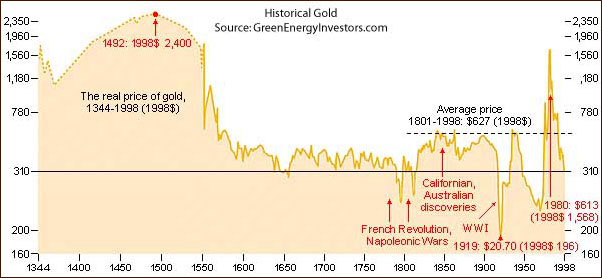
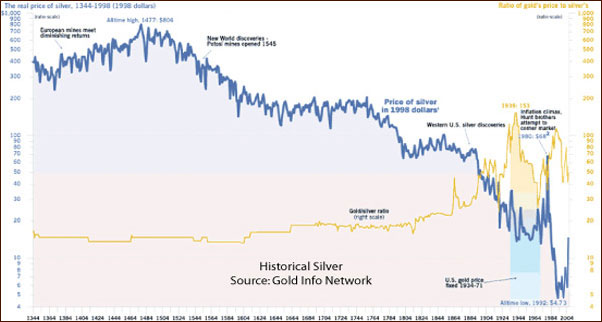
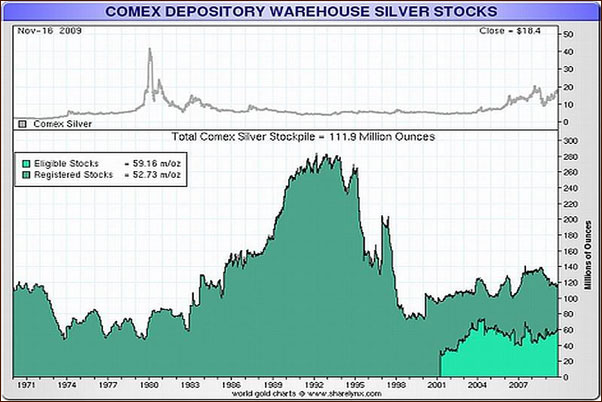
 Other presidents get the picture on paper currency. Obama should have his picture on food stamps. There are now 40 million Americans who choose to have the government feed them rather than feed themselves. This is almost 1 in 7 people who depend on government food. Now do you see how totally and completely hopeless things are?
Other presidents get the picture on paper currency. Obama should have his picture on food stamps. There are now 40 million Americans who choose to have the government feed them rather than feed themselves. This is almost 1 in 7 people who depend on government food. Now do you see how totally and completely hopeless things are? 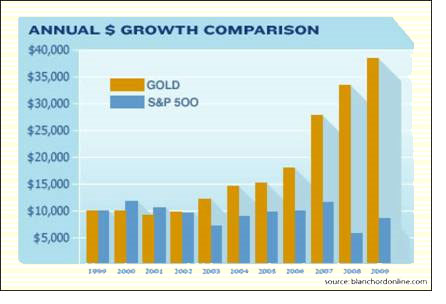
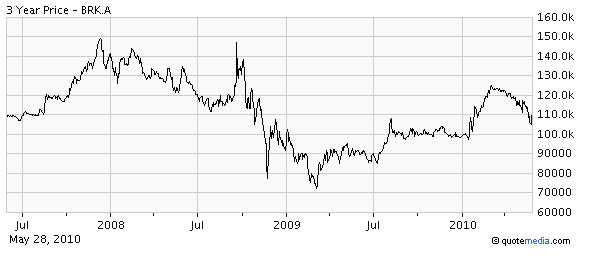
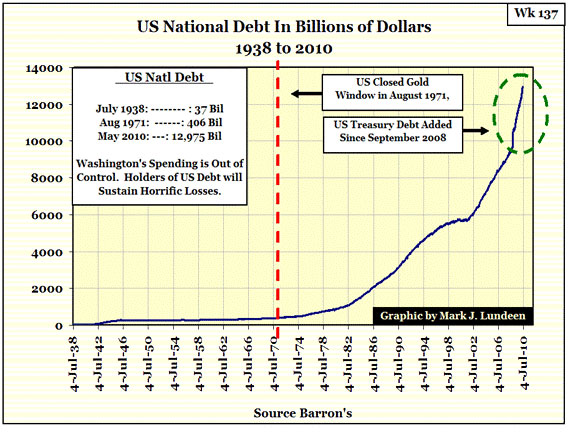
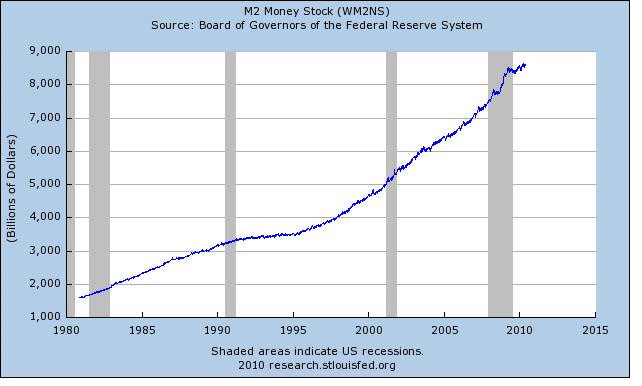
 Get Ready to Profit from a Summer of Decline
Get Ready to Profit from a Summer of Decline
 Following the failure of the latest efforts to plug the gushing leak from BP's Deepwater Horizon oil well in the Gulf of Mexico, and amid warnings that oil could continue to flow for another two months or more, perhaps it's a good time to step back a moment mentally and look at the bigger picture - the context of our human history of resource extraction - to see how current events reveal deeper trends that will have even greater and longer-lasting significance.
Much of what follows may seem obvious to some readers, pedantic to others. But very few people seem to have much of a grasp of the basic technological, economic, and environmental issues that arise as resource extraction proceeds, and as a society adapts to depletion of its resource base. So, at the risk of boring the daylights out of those already familiar with the history of extractive industries, here follows a spotlighting of relevant issues, with the events in the Gulf of Mexico ever-present in the wings and poised to take center stage as the subject of some later comments. Readers in the "already familiar" category can skip straight to part 5.
Following the failure of the latest efforts to plug the gushing leak from BP's Deepwater Horizon oil well in the Gulf of Mexico, and amid warnings that oil could continue to flow for another two months or more, perhaps it's a good time to step back a moment mentally and look at the bigger picture - the context of our human history of resource extraction - to see how current events reveal deeper trends that will have even greater and longer-lasting significance.
Much of what follows may seem obvious to some readers, pedantic to others. But very few people seem to have much of a grasp of the basic technological, economic, and environmental issues that arise as resource extraction proceeds, and as a society adapts to depletion of its resource base. So, at the risk of boring the daylights out of those already familiar with the history of extractive industries, here follows a spotlighting of relevant issues, with the events in the Gulf of Mexico ever-present in the wings and poised to take center stage as the subject of some later comments. Readers in the "already familiar" category can skip straight to part 5.